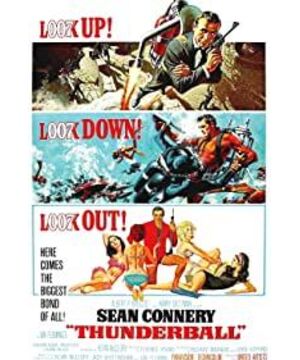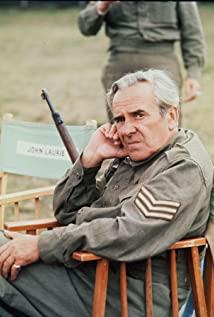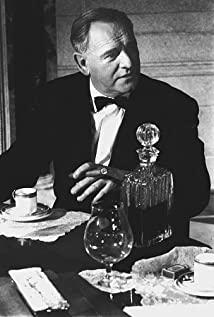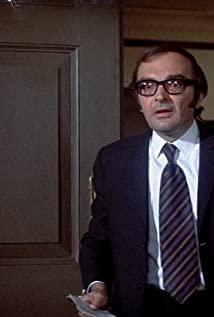I've seen it a long time ago, and the plot has been almost forgotten. It happened that the action channel that had no commercials was broadcast again last week, so I watched it again. The plot is relatively simple. The Devil’s Party hijacked NATO’s aircraft carrying nuclear bombs and demanded a ransom of 100 million pounds with the threat of a nuclear explosion. The unwilling British government urgently dispatched 007 and other special agents to investigate, trying to find the plane to retrieve the nuclear bomb before the deadline. There are many parts of the film that are relatively rough in logic. For example, the mysterious disappearance of the plane is quite clever, but the boss of the Devil Party has to get involved with the pilot’s sister, so that Bond can easily follow the vine to find the door... However, why these many logical loopholes are not like today Many works of the same genre seem to make you have a critical impulse? The reason lies in style. First of all, Hollywood films in the 1950s and 1960s, as well as the Shaw Brothers films in Hong Kong at the same time, generally have the same color in common: bright, bright, saturated to almost distorted. But it is precisely this kind of "distortion" that is more suitable for matching with themes such as the Ten Commandments, Binxu, 007, and ancient costume martial arts. Because the stories they tell are originally far away from reality. The second is the scene. The office of the head of the British and British secret agents in this film is tall, bright and luxuriously decorated, in a medieval British style. Inadvertently create a relaxed atmosphere, as if what is going on here is not a high-level meeting related to national security, but just a cozy palace tea party. The third is comedy style. Whether it's Connery or Moore. The biggest characteristic of James Bond they created is that they always face problems and resolve crises in a relaxed and humorous way. Even if these crises are severe enough to plunge England and even the whole world into a catastrophe. And his enemies, such as the boss of the Devil Party who played with the white cat, seemed willing to play a game of cat and mouse with this suave British ace agent. In short, the whole movie seems to remind the audience: Don't take brother seriously, brother is just a legend! There is a plot in this film that is the most representative. The woman wanted to kill Bond, but she didn't rush to do it, but first spent the spring evening with him. Early the next morning, the woman opened the door to greet her men to enter the house. It's easy to kill Bond at this time, just pull the trigger of the silencer pistol. But don't mind, he had to put himself in the car with great pains, and finally let Bond take the opportunity to escape! But Bond didn't run away either, and was surrounded by the ball. At this time, the woman was on a whim again and insisted on going up and dancing with it. As a result, it was a small life for nothing... From a logical point of view, a woman's first behavior can barely be explained as squeezing the surplus value of a beautiful man. But the second time, it was silly bubbling anyway. But what about bubbling? Watching this movie, I didn't intend to cling to the logic, but to appreciate the style. In the style, Dancing is no longer mentally retarded, but a tribute to Bang De is in a situation like Thornhill in the auction house in "North by Northwest", and the pistol sticking out behind the curtain is exactly the same as the ending of "Thirty-Nine Steps." The modern version of 007 is not the case. In terms of color, it is the same as most films of the same era, and the pursuit is based on cool colors that are closer to reality. The scenes are also rarely stylized. For example, the headquarters or command center that you see in a contemporary anti-terrorism work, in all likelihood, has a low ceiling, dimly lit, crowded and noisy, full of various desks, chairs, monitors, and electronic equipment. The most important difference is that there are almost no comedies, only seriousness. Whether it's Bond, Bourne, Jack Bauer, his face is tight and unsmiling. It was as if the nuclear bomb was really going to explode, the embankment was really going to burst, and the life of his girlfriend was really at stake! Logically, everything is as real as possible (at least there is nothing wrong with it). Can be put on 007, true, but not necessarily a good thing. Because while pursuing realism, it has to retain some of the old drama elements. These elements often only complement the "joking", but they cannot withstand the test of realism. So it is easy to be the culprit for making loopholes or failures. For example, if you made Bond more low-key and civilian, is the hot racing scene too ostentatious? If you make Bond more flesh and blood, is it a bit hypocritical to be unharmed in the rain of bullets? If you allow Bond to be dedicated, does the film still provide a Bond girl with a fresh face in every episode? If you make the bandit leader even more vicious, is it reasonable to catch Bond and not kill and eventually lead him to escape? It's been a long time, but there is actually a problem between the content and the form. And this has almost become a common problem in modern genre films. For example, people who have watched Galaxy's new film "Accidents" must be curious: How does an accident-producing professional killer usually pick up business? In other words, how did the two murderers in the film find Gu Tianle? If a cigarette falling on the ground is enough to cause tensions in the entire team, how can the danger of unintentionally leaking wind noise by the matchmaking contact be beyond their tolerance? The reason for such doubts is that the story of the film is really true, and the actors' acting is serious, forcing the audience to "confess the truth." Conversely, if you change to Xu Guanwen's "Modern Bodyguard", no one will question the credibility of plots such as "finger blocking the barrel" and "learning to open the door". Because everyone knows that this is an absurd comedy! On this issue, even the so-called "Dark Knight" made by God has room for discussion. Although we understand, the portrayal of the dark side of the emotional entanglement that focuses on the character's growth process will make the film more profound. But the key is, does it really apply to movies adapted from comics? Characters in the original Most of the modeling is highly exaggerated, which is in harmony with the characteristics of the art form of comics. But once copied into the cruel, realistic style of the modern anti-terrorist war background, people will inevitably ask: How does Batman’s cloak and the clown’s painted face actually help their goals in life? On the Internet, you can often see the admonition of "Don't take it seriously, it's just a movie". But when saying this, should we also first determine what mentality the director is telling the story? If the director is serious in his bones, but you persuade the audience not to take it seriously. Doesn't this sentence become a tool for inferior directors to deter them?
View more about Thunderball reviews











